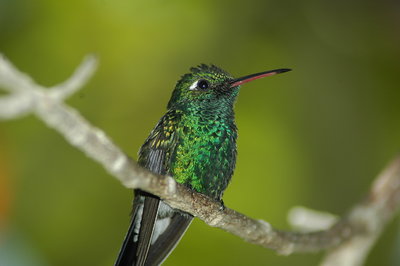THE WORLD’S SMALLEST BIRD: CUBAN COLIBRÍ (ZunZún)
In the warm climate and abundant tropical vegetation of that ‘green alligator’-Cuba- is the only hummingbird species habitat of the “world’s smallest bird.”
This bird intensely active, spend more energy-relative to its diminutive size of any warm-blooded animal.
It is vibrating faster (about 60 flaps per second) and allows you to move at a speed of 80km/por hour in mating season runs nuptial at high altitudes, which require about 200 flaps per second.
The colorful plumage no is due to pigmentation, but the refraction of light, because their feathers have prismatic configuration.
The species of smaller size is the bee hummingbird or bee elf (Mellisuga helenae), whose beak and tail is only about 5.5 inches, exclusive of Cuba and was discovered by the German naturalist Juan Cristóbal Gundlach in mid-nineteenth century..
http://youtu.be/-348UxJsW7Q
The male is 63mm, ruby has feathers on his head, cheeks and throat. When “saw” Wedding plumage (red or ruby on the upper body blue) looks on the forehead or cheeks, short feathers, and other long throat, which vibrate when you sing.
The female, greenish, lays eggs during May and June in a cup-shaped nest, built with lichens, fibers and spider webs.
Known universally by hummingbirds, up the long family of “Trochilidae”, it represents about 300 species throughout the Americas, but the Bee Hummingbird, the smallest and arguably the most beautiful, is ours, is endemic to CUBA .
Wiki/HummingbirdsBee/ InternetPhotos/YouTube/ TheCubanHistory.com
The Cuban History, Hollywood.
Arnoldo Varona, Editor.
EL PAJARO MÁS PEQUEÑO DEL MUNDO: EL COLIBRÍ CUBANO. (ZunZún)
En el clima cálido y abundante vegetación tropical de ese “verde alligator’-Cuba-es el único hábitat de las especies de colibríes” el pájaro más pequeño del mundo “.
Esta ave intensa actividad, gastan más energía en relación a su tamaño diminuto de cualquier animal de sangre caliente.
Se está vibrando más rápido (alrededor de 60 aletas por segundo) y le permite moverse a una velocidad de horas 80km/por en la época de apareamiento se ejecuta nupcial en altitudes elevadas, que requieren alrededor de 200 aletas por segundo.
El colorido plumaje no es debido a la pigmentación, pero la refracción de la luz, porque sus plumas tienen una configuración prismática.
Las especies de menor tamaño es el colibrí abeja o elfo de las abejas (Mellisuga helenae), cuyo pico y la cola es de sólo 5.5 pulgadas, con exclusión de Cuba y fue descubierto por el naturalista alemán Juan Cristóbal Gundlach, a mediados del siglo XIX ..
http://youtu.be/-348UxJsW7Q
El macho es de 63 mm, el rubí tiene plumas en la cabeza, las mejillas y la garganta. Cuando se “vio” el plumaje de la boda (rojo o rubí en la parte superior del cuerpo azul) se ve en la frente o las mejillas, plumas cortas, y de la garganta otra larga, que vibran cuando cantas.
La hembra y de color verdoso, pone los huevos entre mayo y junio en un nido en forma de taza, construido con líquenes, fibras y telas de araña.
Conocido universalmente por los colibríes, hasta la familia de largo de “Trochilidae”, que representa alrededor de 300 especies de todo el continente americano, pero el colibrí abeja, la más pequeña y, sin duda la más hermosa, es nuestra, es endémica de CUBA.
Wiki/HummingbirdsBee/ InternetPhotos/YouTube/ TheCubanHistory.com
The Cuban History, Hollywood.
Arnoldo Varona, Editor.






